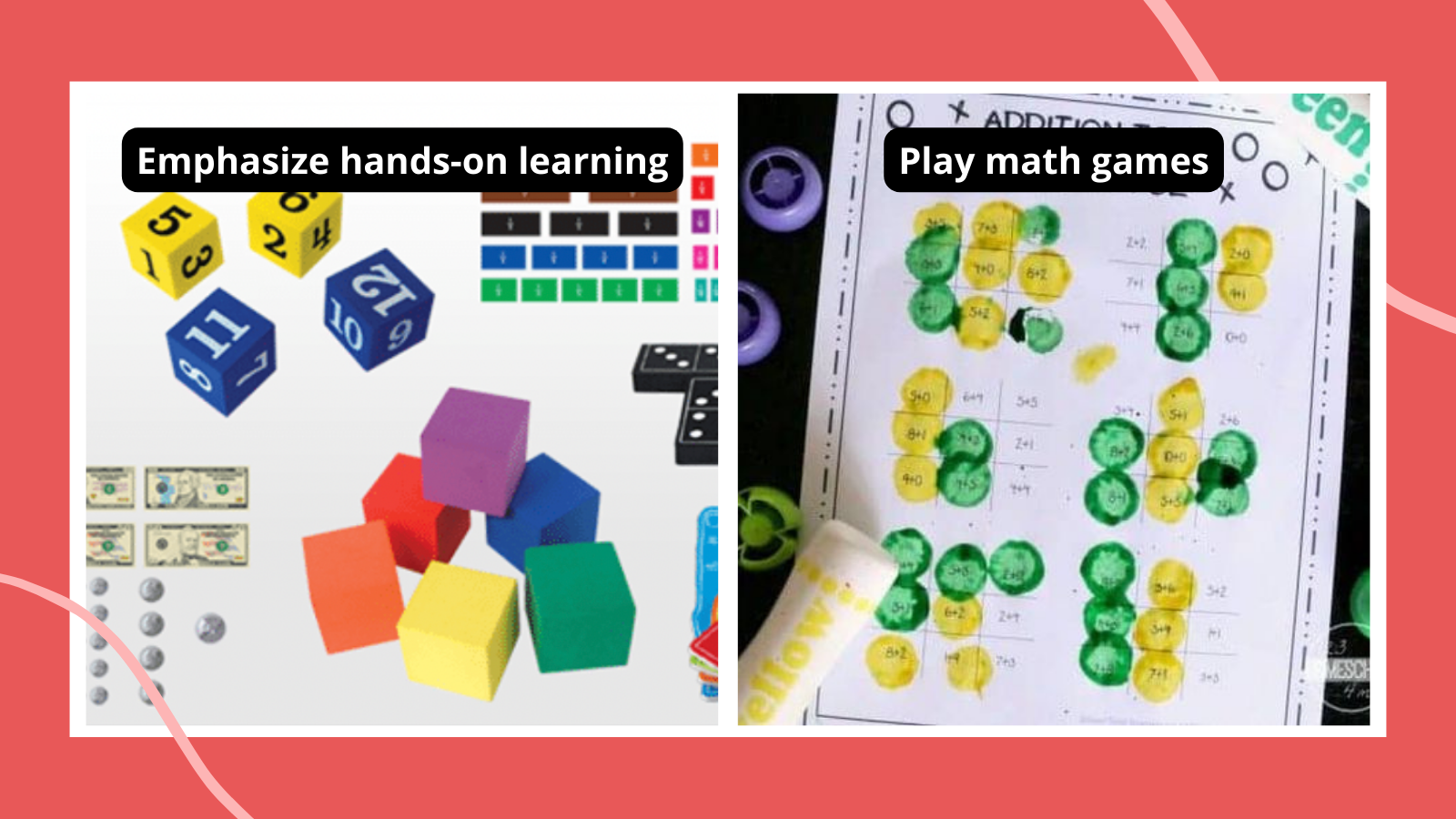What are the essential strategies for good, effective math teaching? Everyone wants kids to succeed in math, but how best to do that? In most districts, standardized tests are a high-stakes way to measure students’ understanding, yet few want to teach to the test. Over-reliance on test prep materials and “drill and kill” worksheets can make math repetitive, boring, and devoid of true understanding for kids.
The reality is that motivating, effective instruction and good test scores aren’t mutually exclusive. Being intentional and using creative approaches to your teaching can get students excited about math and successful in their understanding. Here are some essential strategies and attitudes in teaching mathematics that can help make this your class’s best math year ever!
1. You are all mathematicians
Noted math educator Marilyn Burns wrote a classic book entitled Math: Facing an American Phobia (Math Solutions, 1998). The title kind of says it all. In America we have a cultural belief that you have to be born good at math because as Barbie once said, “Math is hard.”
On the other hand, we have a generally held belief that everyone can and should learn to read. If you were to tell a room of adults you hate math, you would get plenty of affirmation. Try telling them you hate reading. You’ll see a different reaction.
As teachers of young children, we need to help our students understand and believe that we are all mathematicians, just like we are all readers. We can do this by giving kids positive and successful experiences with math from an early age and pointing out to them how we all are constantly doing math on a daily basis.
How to teach it:
Try this with your students. Ask them to write down every bit of math they did at home the day before. Did they look at a clock and check the time? Math. Did they use any words reflecting spatial sense like next to, under, over, right, left? Math. Did they hear anything about weather like the temperature for the day? Math. And it goes on. Make clear to them that they are already daily mathematicians and that in school you are going to help them in becoming even more expert in the field!
Use targeted feedback to support this. Rather than general statements like “That was good,” it’s better to say, “You put those two numbers together perfectly. That is the exact right answer and perfect mathematics!” Now the student knows what was good and can reflect on that.
The reality is everyone can do math and do it well, but as the teacher, you have to believe that to be true and help your students truly experience it and believe it too.
2. You can do it! … You did it!
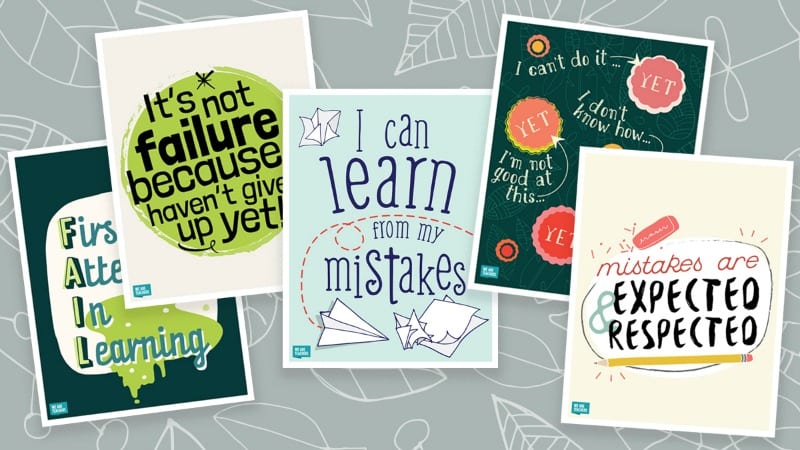
Becoming expert at anything is usually not easy. There is work involved, but there’s a great feeling of satisfaction and accomplishment when we work hard and see results. Rather than success being a function of how much math talent we’re born with, kids need to hear from teachers that anyone who works hard can succeed. Practice and persistence make you good at math or anything else.
Ask students about experiences they have had with sports. How long did it take to learn to throw a ball? Kick a goal? Make a basket? No one is born with these skills. They take lots of practice. Well, so does math. But just like sports, practice in math can be fun because the results are visible.
How to teach it:
With this in mind, one simple thing you can do at the beginning of the year is to give everyone a math assessment of all the concepts they will be expected to master in the year. Start it off with some skills from the previous year, but put in everything else.
Tell students first that this assessment is to help you know what you have to teach this year. If they all know how to count to 10 already, you won’t spend a lot of time on that, maybe just a little practice. Tell them to circle anything they don’t know how to do yet and want to learn. They are helping you find out what to teach. Explain that these assessments (some teachers call them inventories) don’t get graded, they are only to help you as the teacher to plan. Because that is what it’s really for.
At the end of the year, give students the same assessment again. Score it and hand it back along with the original so they can compare. When they see how much they have learned, they will feel like they received a gold medal in mathematics!
Try it: Free Printable Growth Mindset Posters
3. Assessment (aka: testing) is not a dirty word
Assessment is not something separate from your instruction. In fact, assessment, like that first math assessment of the year mentioned above, drives instruction. It should be integrated into your planning.
How to teach it:
Exit tickets or questions, quizzes, open-ended questions, and meaningful homework assignments confirm what students have mastered or not mastered and let you know what needs to happen next.
Additionally, asking students to explain their thinking orally or in writing is a great way to determine their level of understanding. A capable digital resource, designed to monitor your students in real time, can also be an invaluable tool, providing actionable data to inform your instruction along the way if you have access. Remember, it’s not about generating grades. It’s about learning what needs to be taught.
Try it: Free Printable Exit Ticket Templates
4. Rome was not built in a day
Sometimes we get stuck in a mindset of “a lesson a day” in order to get through the content. However, we should keep our pacing flexible, or kids can fall behind. Walk through your classroom as students work on problems and observe the dynamics.
How to teach it:
Talk with them individually and ask questions to gauge understanding. In response, make decisions to go faster or slower or put students in flexible groups as needed. Flexible groups could be together for the lesson, the week, the concept, or however long it makes sense. It can help you individualize instruction more easily.
5. You’re motivated = they’re motivated
Generally, students will become excited about a subject if their teacher is excited about it. However, it’s hard to be excited about teaching math if your understanding hasn’t changed since you learned it in elementary school. When you have confidence in your own mathematical expertise, then you can teach math confidently and joyfully.
How to teach it:
How to do this? Consider attending a conference on math teaching. Don’t be intimidated. It’s not all math geniuses trading formulas. It’s teachers sharing best practices. Most every state has a branch of NCTM (National Council of Teachers of Mathematics) that provides programs from preschool through high school. It’s very motivating. Or read a book on math-teaching ideas by folks like John Van de Walle, Marilyn Burns, Susan O’Connell, or other leading math educators. Get together with a couple of colleagues and start a book group. These books are full of ideas, lessons, and motivation. We need it just like the kids do.
Try it: Best Education Conferences in 2024-2025
6. The eight math commandments
When the Common Core State Standards were first released, most people focused on the content standards. At the beginning of the document, however, there were eight math-practice standards. These are qualities and attitudes of young mathematicians that are desirable to develop in all kids. They are:
How to teach it:
While the document is written for adults, here’s the kid-language version. It makes a great poster and discussion starter:
- I can solve problems without giving up.
- I can think about numbers in many ways.
- I can explain my thinking and try to understand others.
- I can show my work in many ways.
- I can use math tools and explain why I chose them.
- I can work carefully and check my work.
- I can use what I know to solve problems.
- I can solve problems by looking for rules and patterns.
For good lesson ideas and teaching tips for each standard, check out Putting the Practices Into Action by Susan O’Connell and John SanGiovanni (Heinemann, 2013).
7. Talk the math and walk the math
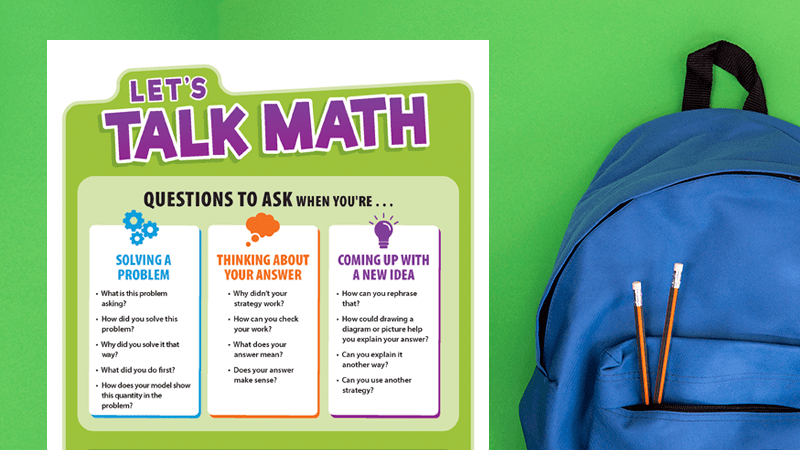
Communicating about math helps students process new learning and build on their thinking. Engage students during conversations and have them describe why they solved a problem in a certain way. “My goal is to get information about what students are thinking and use that to guide my instruction, as opposed to just telling them information and asking them to parrot things back,” says Delise Andrews, who taught math (K–8) and is now a grade 3–5 math coordinator in the Lincoln Public Schools in Nebraska.
How to teach it:
Instead of seeking a specific answer, Andrews wants to have deeper discussions to figure out what a student knows and understands. “True learning happens a lot around talking and doing math—not just drilling,” she says. Of course, this math strategy not only requires students to feel comfortable expressing their mathematical thinking, but also assumes that they have been trained to listen respectfully to the reasoning of their classmates.
Learn more: Free Let’s Talk Math Poster
8. Give students time to reflect
Sometimes as teachers we get so caught up in meeting the demands of the curriculum and the pressure to “get it all done” that we don’t give students the time to reflect on their learning.
How to teach it:
Students can be asked to reflect in writing at the end of an assignment or lesson, via class or small-group discussion, or in interviews with the teacher. It’s important to give them the time to think about and articulate the meaning of what they’ve learned, what they still don’t understand, and what they want to learn more about.
This provides useful information for the teacher and helps the student monitor their own progress and think strategically about how they approach mathematics. To keep it simple and build a routine, you can give students an index card at the end of a lesson and ask them to write a thought about each of those three things:
- What I learned.
- What I still don’t understand.
- What I want to learn more about.
Not only will this give you invaluable feedback, but it gives students the clear message that you care about what’s happening with them and their learning.
9. Allow productive struggle
Don’t spoon-feed kids answers and strategies. Pose the question and allow time and attitude for some “bumping around.” That’s what real life is like. We don’t always know how to solve a problem, like buying enough fertilizer for the lawn, but we can figure it out. We might make some mistakes, but we can get there.
How to teach it:
Generally, provide as little information as possible but enough so students can be productive. Effective math teaching supports students as they grapple with mathematical ideas and relationships. Allow them to discover what works and experience setbacks along the way as they adopt a growth mindset about mathematics. This also involves wait time. How much time do you allow kids before you expect an answer? We feel time-pressured in our teaching, so we tend to want to “move it along.” Resist this. If no on answers, just wait. Someone will eventually venture a guess. You can work from there, but give them time to think and process.
10. Get hands-on
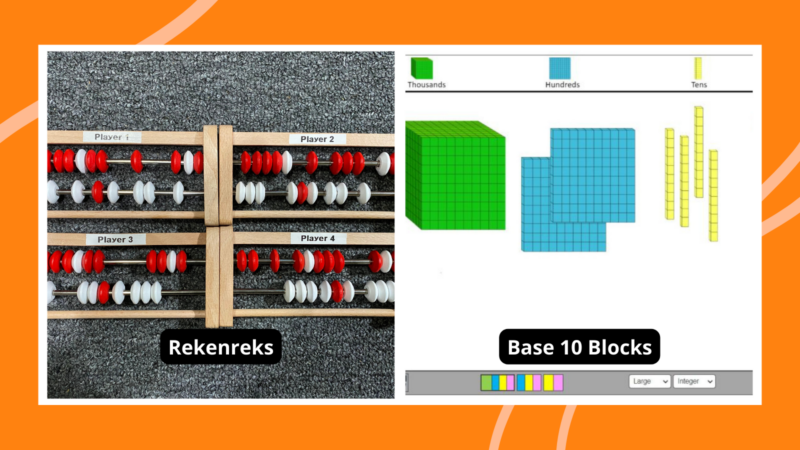
Developmentally, the first stage for almost any math learning should be physical. Then pictorial, then symbolic. From counting to algebraic equations, the physical comes first. To do that, you need “stuff” to get physical with.
How to teach it:
You can use almost anything to model concepts like counting, operations, measurement, data, money. Dried beans work. Cubes work. Tiles work. Buttons work. Almost any set of small objects works. There are also place value models, geometric shapes, number tiles, and so on. Bring out the math tools too! Calculators, scales, rulers, measuring tapes, balances, measuring cups, all of it. Experiencing math ideas in a hands-on way always leads to deeper understanding.
Try it: Best Math Manipulatives for the Classroom
11. Explore!
Whatever you get involved in with math and kids, give them time to explore first. This is particularly true for math tools and materials.
How to teach it:
If you’re introducing calculators or scales or rulers or number cards, first make an agreement with the class. Something along the lines of, “You have 10 minutes to play with this, explore it, learn what you can about it, and then we’ll share back what you notice. After that, I’ll be giving you some directions on what I’d like to do with it today.” They’re going to play with it anyway, so you might as well use that inclination to your advantage, and it will also open up their thinking at the beginning and value it.
12. In a group and by yourself
As you plan your lessons, try to allow time for individual work, partner work, and small-group work. Kids need time in all three contexts.
How to teach it:
Everyone needs that individual time to work things out for themselves, work at their own pace, and to be properly assessed. Partner groups give students a chance to support one another and learn how to cooperate with others on a small scale in an easily managed environment. Small groups allow for diverse thinking, learning from others, and developing mutual cooperation and listening skills.
13. The math should do something
Kids get excited about math when they get to solve real-life problems.
How to teach it:
For instance, when teaching 4th graders how to determine area, do this Haunted Mansion project. Kids get a letter from the fictitious owners of the Haunted Mansion Fun House. The owners want a plan for designing their new fun house. It has to include a certain perimeter, area, and volume. Kids can’t wait to learn how to do it and are incredibly proud when they use math to make a model of the fun house.
14. Play math games
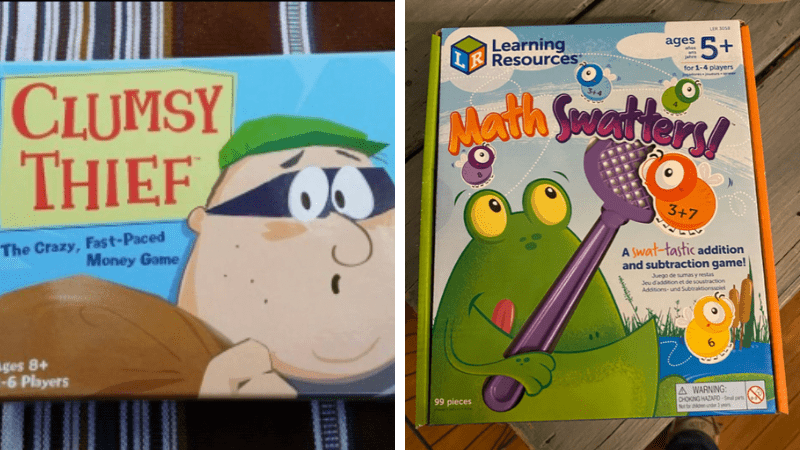
When you play a game, the number of repetitions of certain tasks is surprisingly large. Just consider how many times you roll two dice together and add them in a board game like Monopoly. That’s practice, practice, practice, but it doesn’t feel like it. No one complains or even realizes how many times it’s happening. You can find a game or make one for every math concept you will teach. And kids will thank you for it!
How to teach it:
Games are an excellent way to make the learning more fun while simultaneously promoting strategic mathematical thinking, computational fluency, and understanding of operations. Games are especially good for kinesthetic learners and foster a home-school connection when they’re sent home for extra practice.
Try it: First Grade Math Games
15. Establish effective math routines
Students generally feel confident and competent in the classroom when they know what to do and why they’re doing it. Establishing routines in your math class and training kids to use them can make math class efficient, effective, and fun!
How to teach it:
For example, consider starting your class with a number sense routine and finishing with reflection on the day’s learning. Rich, productive small-group math discussions don’t happen by themselves, so make sure your students know the “rules of the road” for contributing their ideas and respectfully critiquing the ideas of others.
16. Reward progress math-style
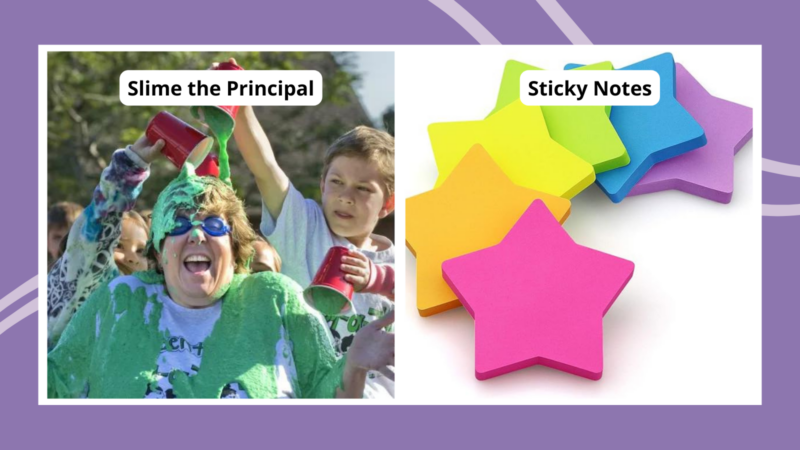
Students—especially those who haven’t experienced success—can have negative attitudes about math. While good instruction and success are the best intrinsic motivators, consider rewarding achievements with certificates, stickers, badges, or rewards as they progress. Remember: They are kids and kids like this stuff.
How to teach it:
Make the rewards all math-oriented though. If you give out stickers, you’ll find even stickers that just have numbers on them are motivating. Collect them all, 1 to 100! Or have a Mathematician Certificate of Achievement with Einstein’s picture on it. This helps build a culture that says math is fun, math is cool, and learning math is valued.
Try it: Classroom Rewards and Incentives That Really Work
17. Build the home–school connection
Think about ways to assign meaningful homework. Ask deeper, more open-ended questions, not just practice pages. Yes, practice is important, and you should help kids understand that. There is a need for practice pages, but also have kids engage with people in their homes at least once a week on an interesting question.
How to teach it:
Ask questions like:
- What do you think the best way to multiply two numbers is?
- What is the best way to multiply three numbers?
- How would you measure the wall if you had to paint it?
- How do you know if something you buy is a good price?
Make parents aware at the beginning of the year that you are going to be asking one of these questions every week, and make clear that there is no one right answer you are looking for. Explain this process is just so your students will understand that people in their home use math, that it’s valuable, that it’s done in different ways, and that you care about it. Those are huge pluses for making math relevant for kids.
18. Numbers all around us—raising math awareness
Help kids understand and value math by building their awareness of the math all around them. With every math concept you teach, a routine math assignment should be to have students go home and find out where this concept (measurement, money, multiplication, fractions, etc.) is in their home or neighborhood.
How to teach it:
For example, learning about patterns? Any in your house? On your clothes? Learning about addition? Does anyone in your house add anything? Ask your parents. Learning geometry? Any shapes in your house? In your neighborhood? Have students report back with written notes about what they found out. Pretty soon, no matter what you teach, they’ll automatically be on the lookout for it and they’ll see how math is very relevant.
19. Read, read, read aloud
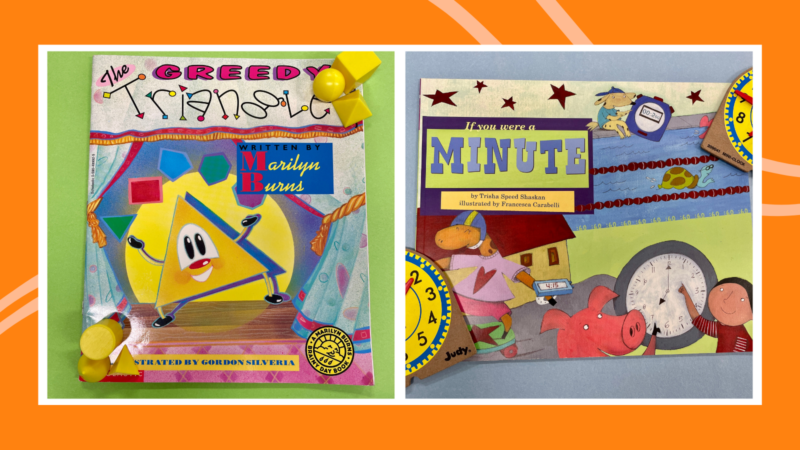
Although we don’t often think of reading as a math strategy, there’s almost nothing better to get students ready to learn a new concept than a great read-aloud. It’s fun, it’s engaging, and it can teach us a lot.
How to teach it:
Kids love to be read to, and the more we show students how math is connected to the world around us, the more invested they become. It also connects imagination to math and makes for a more creative context. Reading books with math connections helps children see how abstract concepts connect to their lives.
Try it: Amazing Math Picture Books for Young Mathematicians
20. Prove it!
A number of students learn math by rote. They’ve attended special programs or learned online or from family members. They have memorized procedures, but have no real understanding of why they are doing what they are doing. This is OK for a while, but eventually if something in the procedure changes or problems become more complex, or the idea must be applied, it all breaks down.
How to teach it:
One way to help with this is when a student tells you something like, “I know 9 x 9 = 81.” Reply, “Ah, so you say. But can you prove it?” If they don’t know what to do next, take some time with your class to model ways to provide proof.
For example, you could draw a picture of 9 groups of 9 dots in each. Or you could use tally marks. Or you might say, “I know 10 x 9 = 90 and 9 less is 81,” and show a multiplication chart. You could use buttons to build arrays. There are a ton of ways for students to show what they know, and yes, it is slower, but unless someone can prove that what they say is true, it makes real conceptual understanding suspect.
21. The art of math
Almost all kids love art, and visual learners need a math strategy that works for them too, so consider integrating art and math instruction for one of the easiest strategies in teaching mathematics.
How to teach it:
Many concepts in geometry, such as shapes, symmetry, and transformations (slides, flips, and turns), can be applied in a fun art project. Also consider using art projects to teach concepts like patterns, measurement, ratios, arrays, and really anything.
Try it: Geometric Art Project
22. Teach estimation first
The majority of math we do on a daily basis involves estimation. It’s an important but often neglected skill. Many kids grow up thinking that in math they must have the exact answer or they can’t move forward with whatever they are doing.
When you shop for food, you estimate how much you need of a certain item. You don’t know exactly how many slices of bread your family will eat this week or how much milk they will drink down to the ounce, but you have some idea based on your experience, so you estimate, and you buy about how much you think you will need. That’s what an estimate is. A guess based on experience and what you can see.
How to teach it:
Before you do any math with kids, ask them for an estimate before they give you an answer or begin calculations. It will build understanding and number sense, two qualities that will help them throughout their lives.
Try it: Estimation Activities That Take the Guesswork Out of Teaching Math
23. Real math in school
Consider starting some projects in school with your kids where they use math to make things happen.
How to teach it:
For example, you could start a class store. Think of all the math involved: counting, adding, subtracting, multiplication, money, data collection … the list goes on. Or how about making a classroom lunch once a week for all to share. Kids will not only see how real, useful, and relevant these skills are, but they will also feel like “Wow. I really did that. I made it happen. No me, no math = no lunch.” It’s that sense of real accomplishment and empowerment we want for all our young mathematicians.
A school garden is another great real-life way to apply math concepts in a fun way while instilling a sense of purpose. Measurement, geometry, and data analysis are obvious topics that can be addressed through garden activities, but also consider using the garden to teach operations, fractions, and decimals. Additionally, garden activities can help promote character education goals like cooperation, respect for the earth, and, if the crops are donated to organizations that serve those in need, the value of giving to others.
Try it: How To Start a School Store
24. Encourage teacher teamwork and reflection
Teaching is a hard job. It’s even harder if you go it completely alone. Collaborate with other teachers to improve your math instruction skills.
How to teach it:
Consider meeting with a teacher partner to share and discuss a unit you are both starting. Begin by discussing the goals and what it will look like for kids to achieve them. Work backward from there. Share strategies that have worked and maybe research a little together. Try things out and then share with each other what worked and what didn’t work.
25. Get moving
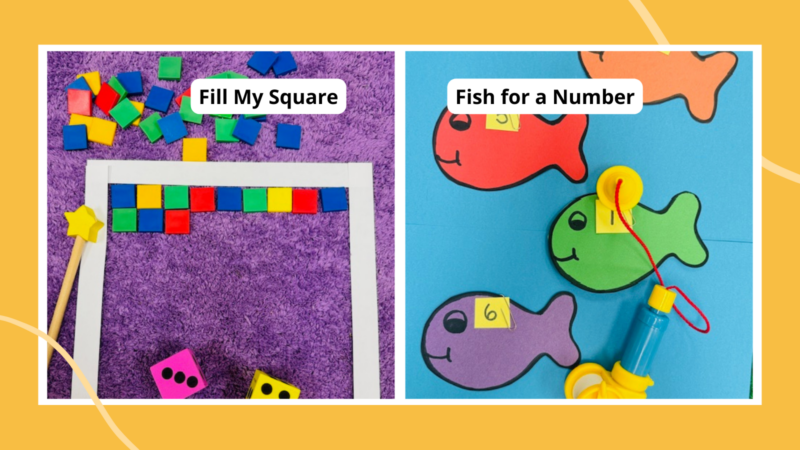
Kids are built to get up and move. Use that desire to make your math lessons even more fun and motivating. Asking kids to get out of their seats can increase their energy and interest.
How to teach it:
For example, you could ask students to:
- Make angles with their arms
- Create a snap/clap sequence that demonstrates different types of patterns
- Complete a shape scavenger hunt in the classroom
- Run or complete other exercises periodically, count them, time them, and graph the results
- Jump on a given number from the ones you chalk on the playground
The possibilities of these strategies in teaching mathematics are limited only by your imagination and the math concepts you need to cover.
Try it: Active Math Games and Activities for Kids Who Love To Move
26. There’s more than one way to bake a cake
We need to be open-minded when it comes to math strategies. There are many viable strategies to solving any problem, including many math problems. Promote open-ended discussions about how different concepts in math can be done.
How to teach it:
For example, when adding two two-digit numbers together, you could stack one above the other, do column addition, regroup if you need to, and check the answer by reversing the operation. Is there another way? Could you add the tens first and then the ones and then put them together? Is it easier for you to do it vertically or horizontally? Do pictures or drawings help you?
When you come to a concept, brainstorm with your class about different ways to solve problems in this area. This sharing of ideas promotes flexible thinking and also validates different approaches that are appropriate to different learning styles and levels.
27. Always begin with a question, not a statement
A good way to start any lesson is with a question. A question that gets people thinking. Instead of saying, “Today we are going to learn about multiplication,” what if instead you put a pile of books out on the floor and asked, “What’s the best way to find out how many books there are here?” You might get questions back like, “Can we move them?” That’s a good sign. It shows you’ve already engaged students’ thinking. Questions do that—they provoke thinking.
In this example, some kids will estimate, some will want to count by ones, some will want to skip-count, some will want to group them and do repeated addition, while others will group them and multiply. You can then ask, “What does efficient mean?” Field answers and work toward the idea that efficient means quick and accurate. That’s what multiplication is—it’s a quick and accurate way of finding out how many.
Another good opening question is, “What do you know about ________ ?” Fill in the math topic you are about to start. Have the class brainstorm on this, and write everything they say down on a chart. This will help you assess previous knowledge, give kids a chance to share, expose them to new ideas, validate their thinking, and open the door to exploration.
How to teach it:
Think about whatever you’re teaching and consider: What is the main idea here, and what’s a question that gets at it? Lead with that and the rest will follow.
We all want our kids to succeed in math. In most districts, standardized tests measure students’ understanding, yet nobody wants to teach to the test. Over-reliance on test prep materials and “drill and kill” worksheets steal instructional time while also harming learning and motivation. But sound instruction and good test scores aren’t mutually exclusive. Being intentional and using creative approaches to your instruction can get students excited about math. These essential strategies in teaching mathematics can make this your class’s best math year ever!
Try it: Ways To Pose Better Math Questions in Class

